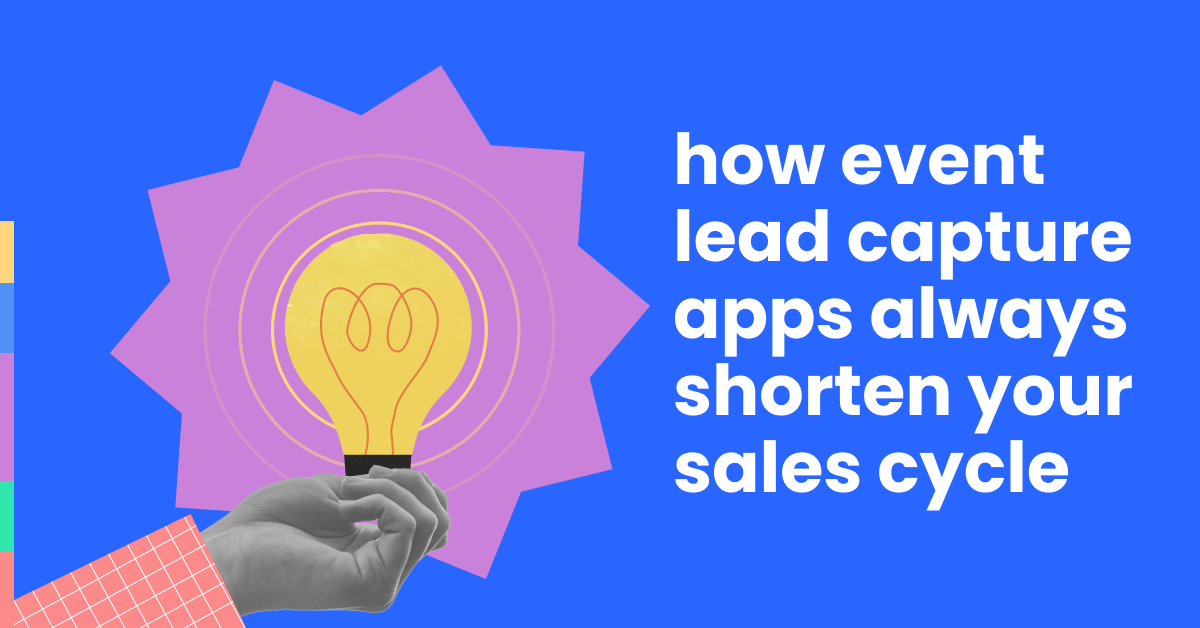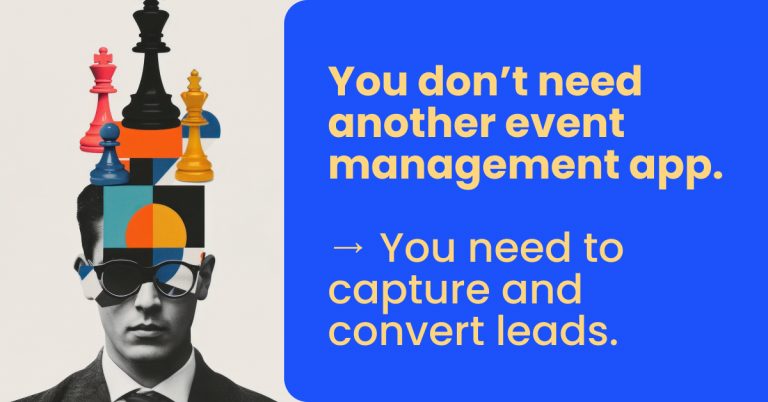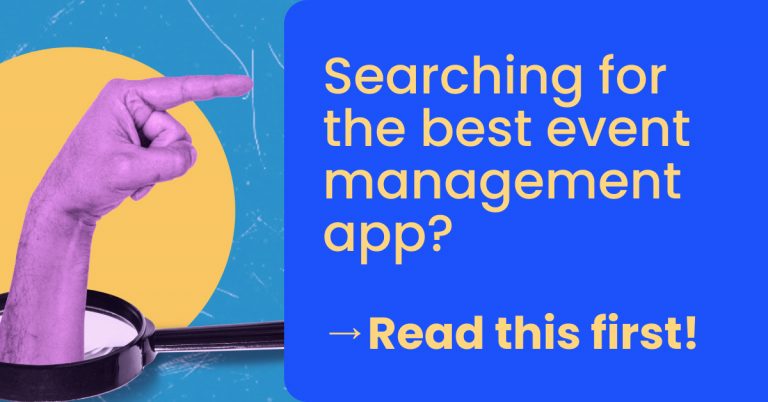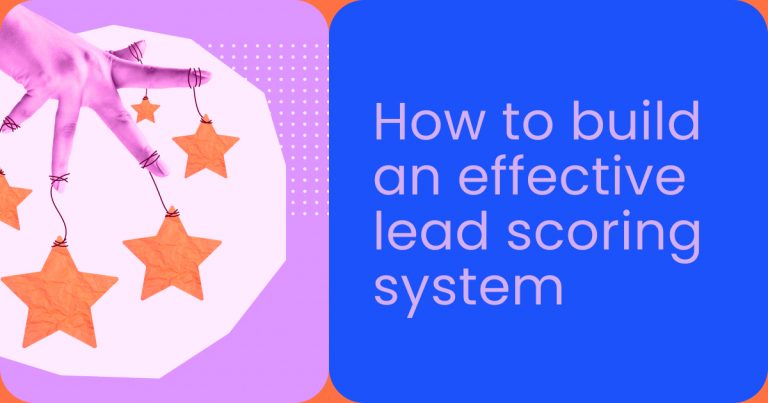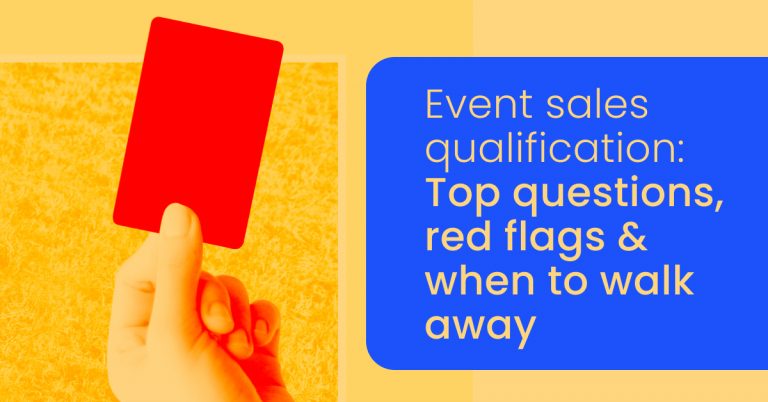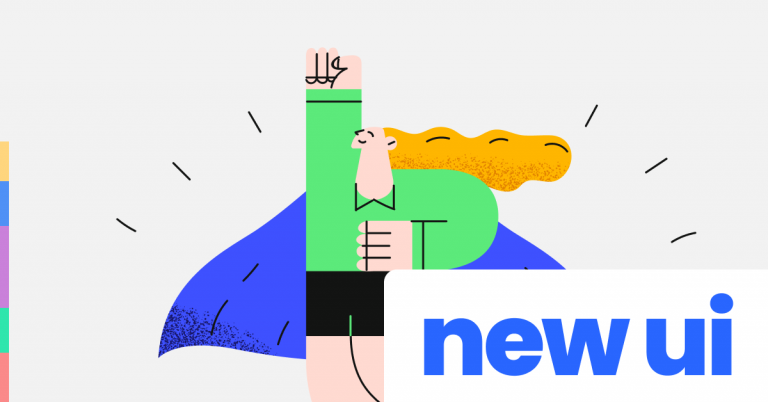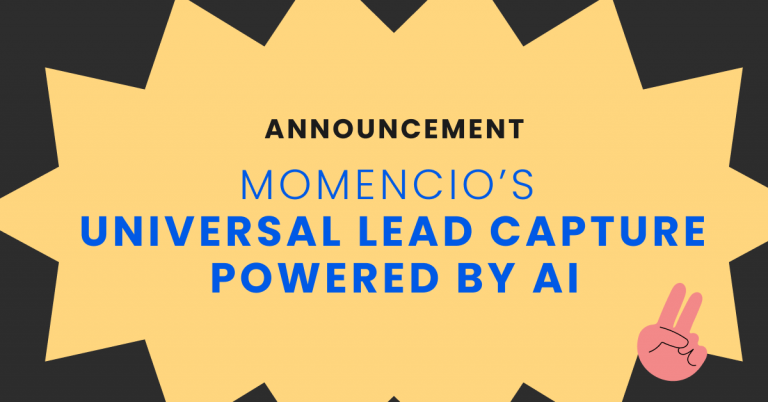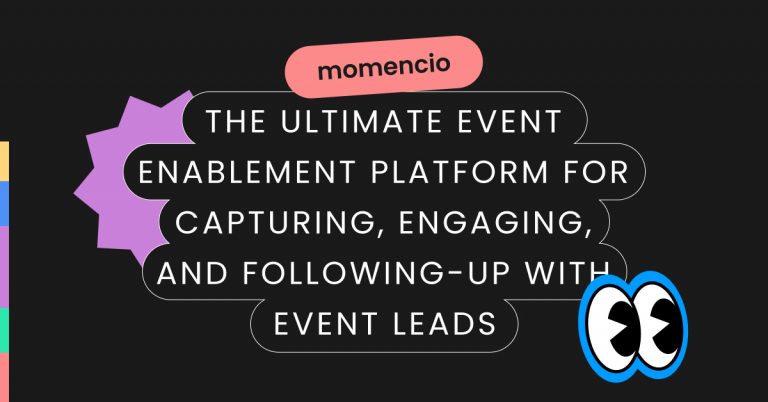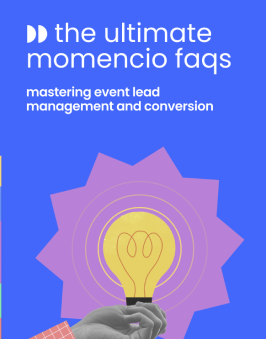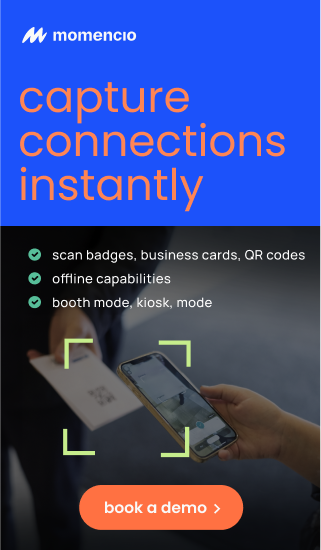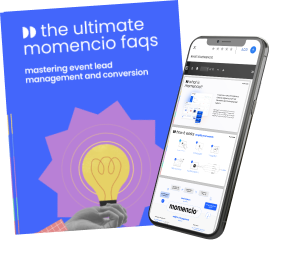One challenge constantly stands out for event marketers: accelerating the sales cycle to maximize ROI from events. Research shows that 79% of leads generated during events fall through the cracks without prompt follow-up, leaving substantial revenue potential untapped. But with the right technology, event professionals can turn fleeting connections into loyal customers efficiently. Enter event lead capture apps—tools designed not just to gather attendee data but to streamline and accelerate the sales journey from the moment a lead is captured.
Lead capture apps do much more than store contact details. They automate data capture, integrate seamlessly with CRM systems, and provide real-time analytics, transforming raw attendee data into actionable insights. This enables sales teams to prioritize high-quality leads and follow up with precision, a crucial step given that nearly half of buyers choose the vendor who responds first.
This article dives into how event lead capture apps can optimize lead management, from automating data collection and follow-ups to CRM integration and real-time analytics. By the end, you’ll see how these tools empower sales and marketing teams to shorten the sales cycle, convert leads faster, and ultimately enhance event ROI.
The role of lead capture apps in accelerating sales cycles
Event lead capture apps are essential tools in today’s fast-paced sales environment, enabling businesses to engage potential customers immediately. This timely engagement is crucial, as research shows that leads contacted within five minutes are 21 times more likely to convert than those left waiting even 30 minutes. By automating the capture and processing of lead data, these apps allow teams to engage with leads promptly, nurturing them before interest wanes.
Automated data collection for high-quality leads
One of the standout benefits of lead capture apps is the automated data collection process. At events, leads are often generated quickly, making manual data entry error-prone and inefficient. Lead capture apps simplify this by automatically scanning badges, business cards, or even digital forms, instantly capturing attendees’ contact details. This process not only ensures that lead data is accurate but also allows sales teams to collect additional valuable details such as session attendance, content interests, and engagement history. These insights build a robust lead profile that supports personalized follow-up efforts.
Example: Consider a trade show where your team interacts with hundreds of attendees. Using a lead capture app, each interaction is instantly documented, enriched with context, and saved, eliminating hours of manual data entry post-event and ensuring that no valuable lead details are lost. Attendees’ unique interests and behaviors can be logged on the spot, creating a clear follow-up path tailored to each individual.
Eliminating data silos with real-time lead visibility
Data silos are a common obstacle in the sales cycle, especially in organizations where different departments handle separate parts of the lead management process. Lead capture apps break down these silos by centralizing lead data in a unified platform that both marketing and sales can access in real time. This shared visibility ensures that both teams are aligned on which leads are worth pursuing, significantly reducing lag time in the handoff between marketing and sales.
When lead capture apps are used, event marketers and sales teams work from a shared, real-time view of each lead’s journey and engagement history. This unity accelerates the sales cycle by allowing sales reps to target high-quality leads immediately, nurturing them with relevant content while their interest remains high.
High-quality data: a foundation for personalized follow-up
Beyond capturing basic contact information, lead capture apps often allow event teams to gather more nuanced data on attendee preferences and behaviors. Details such as session participation, specific product interest, or time spent at an exhibitor booth can all be logged, adding depth to each lead profile. This high-quality data enables sales teams to craft more personalized and compelling follow-ups, significantly increasing the chances of conversion.
Example: If an attendee expressed interest in a particular product feature during a demonstration, this information can be flagged in their lead profile. With a lead capture app, the follow-up email can reference this specific interest, making it far more likely to resonate and prompt further engagement. Personalized messages that speak to the lead’s unique interests are far more effective than generic follow-ups, and this customization is one of the key benefits of using an event lead capture app.
Instant access to real-time data for faster sales cycles
Time is of the essence in lead nurturing, especially after events where attendees may have interacted with multiple vendors. Lead capture apps with real-time data capabilities ensure that lead information is immediately accessible, allowing sales teams to prioritize outreach based on lead engagement levels. Real-time data is instrumental in identifying which leads are ready for quick follow-up and which require more nurturing. This capability helps sales teams stay a step ahead, reaching out while leads are still actively engaged with the event.
Real-time data also provides marketing teams with insights into the types of interactions that drive engagement, helping them refine future event strategies. By optimizing interactions based on live feedback, teams can ensure that high-priority leads are contacted first, shortening the sales cycle and maximizing conversion opportunities.
Integration with CRM for streamlined lead nurturing
Connecting lead capture apps to CRM systems is a game-changer for event marketers aiming to shorten the sales cycle. With this integration, data flows seamlessly from the event floor to the CRM, creating a comprehensive lead management system that streamlines follow-up and boosts conversion rates. This combination of lead capture and CRM integration equips sales teams with a clear, real-time view of each lead’s journey, enhancing their ability to prioritize, personalize, and track interactions.
Seamless data transfer: eliminating manual entry and ensuring accuracy
When lead capture apps are integrated with a CRM, the process of manual data entry is eliminated, reducing the risk of errors or missing information. As soon as a lead’s information is captured at an event, it’s instantly transferred to the CRM. This real-time syncing means that by the time the event is over, the data is ready for immediate action. This streamlined data flow is particularly valuable for high-paced events like trade shows, where dozens or even hundreds of leads are generated.
Automated data syncing ensures that contact details, engagement history, and other contextual notes from the event are preserved without any delays, providing the sales team with accurate and complete information to initiate follow-up.
Example: Imagine your team has attended a major industry conference and generated 200 new leads. With a CRM-integrated lead capture app, all relevant details, from contact information to interaction notes, are saved directly in your CRM. This eliminates days of manual data transfer and allows the sales team to begin personalized outreach as soon as the event ends, ensuring that leads are engaged before they lose interest.
Enhanced lead scoring and prioritization
One of the most powerful advantages of CRM integration is the ability to leverage lead scoring systems to identify and prioritize high-potential leads. By integrating data from a lead capture app into the CRM, sales teams can score leads based on factors such as event interaction levels, interest in specific products or services, and engagement with branded content. This scoring allows teams to prioritize outreach to the most promising leads, accelerating the sales process and improving close rates.
Lead scoring also helps sales teams tailor their approach to the lead’s level of engagement. For instance, high-scoring leads who attended multiple sessions or interacted extensively at the booth can be fast-tracked for immediate follow-up, while lower-scoring leads might enter a longer-term nurturing campaign. This level of targeted follow-up maximizes efficiency, ensuring that the sales team’s efforts are focused on the most qualified prospects.
Example: A lead capture app records a prospect’s attendance at multiple product demos and engagement in Q&A sessions. This high level of interaction boosts their lead score, marking them as a high-priority contact in the CRM. Sales reps can then follow up with this lead immediately, using insights from their interactions to personalize the conversation and increase the likelihood of conversion.
Creating a 360-degree view of the customer journey
CRM integration offers a holistic view of each lead’s journey, consolidating all event data—such as session attendance, notes, and touchpoints—with historical interactions and previous communications. This 360-degree view equips sales teams to engage with leads in a way that feels cohesive and personalized, building stronger relationships that can lead to quicker conversions.
With this integrated approach, every action taken by the sales team is informed by comprehensive lead insights, which boosts relevance and strengthens relationships. This connection is essential, as research from HubSpot shows that personalized and context-aware follow-ups can improve conversion rates by up to 20%.
Example: A potential client who visited a trade show booth may have a history of email interactions or previous purchases documented in the CRM. With lead capture app integration, the sales team can access this full context, allowing them to reference relevant past interactions and tailor their conversation. This approach not only demonstrates attentiveness but also moves the lead faster through the sales funnel by addressing specific interests and needs.
Tracking and optimizing the sales pipeline
CRM-integrated lead capture apps simplify the process of tracking leads through the sales pipeline, providing real-time updates on engagement and progress. Sales teams can monitor how leads respond to follow-ups, adjust their approach based on real-time analytics, and update lead scores as necessary. This dynamic tracking supports sales pipeline optimization, as leads are moved smoothly from one stage to the next without delays.
Pipeline tracking also enables teams to monitor conversion rates directly tied to event-generated leads, providing valuable data on event ROI and helping identify which events yield the most profitable outcomes. With this insight, event marketers can plan more strategically, focusing on high-value leads and events that drive conversions most effectively.
Real-time analytics – enabling data-driven decisions post-event
Real-time analytics are a transformative feature of modern lead capture apps, providing sales teams with immediate insights into lead engagement and behavior during events. This functionality allows teams to make data-driven decisions in real time, optimizing their approach based on the interests and actions of each lead. By leveraging real-time analytics, event marketers and sales professionals can prioritize their efforts on the most engaged leads, enhancing both the speed and quality of follow-ups.
Understanding lead engagement through real-time data
One of the greatest advantages of real-time analytics is the ability to assess lead engagement as it happens. Event professionals can see which attendees showed the most interest in particular products, services, or presentations. This instant visibility into lead behavior provides a clear indication of intent, enabling sales teams to tailor their approach based on each prospect’s specific interests.
For instance, if a prospect attended multiple sessions on a particular product, this may indicate a strong purchase intent. The sales team can prioritize follow-up with this prospect, referencing the session content in their outreach to demonstrate awareness of the lead’s interests.
Example: During a trade show, your lead capture app indicates that a particular attendee has visited your booth multiple times and engaged with a product demo. With real-time insights, your team can prioritize this lead immediately, capitalizing on their active interest to initiate a meaningful conversation while the engagement is still fresh in their mind.
Prioritizing leads based on real-time engagement metrics
Real-time analytics allow teams to go beyond static data points, using engagement metrics such as session attendance, content downloads, and interaction frequency to prioritize leads accurately. Leads that demonstrate high levels of engagement can be categorized as high-priority, receiving more immediate and personalized follow-ups. By identifying these high-potential leads during the event, sales teams can focus their efforts where they’re likely to yield the best results.
Engagement metrics also help distinguish between leads who are simply browsing and those who show genuine interest in specific products or services. This prioritization enables teams to act quickly, enhancing the chances of conversion by reaching out when the lead is most interested.
Example: If an attendee downloads product brochures, asks questions during a session, and engages with your digital content, the real-time data flags them as a high-potential lead. By prioritizing follow-up with this attendee, the sales team can provide targeted information or an offer, demonstrating immediate value and further nurturing the lead toward a sale.
Tailoring follow-ups with real-time behavioral insights
Real-time analytics not only enable lead prioritization but also allow for highly personalized follow-up communications. Sales teams can tailor follow-up messaging based on the specific sessions, demos, or products a lead engaged with during the event. By aligning follow-ups with each lead’s unique interests, sales teams can make outreach more relevant and compelling, increasing the likelihood of conversion.
With insights into the timing, frequency, and nature of lead interactions, sales teams can craft messages that resonate. This level of personalization transforms follow-ups from generic messages into engaging communications that address the lead’s unique needs, making it more likely that they’ll move further along the sales funnel.
Example: A lead attended a session on advanced analytics features at a tech conference. In the follow-up email, the sales team references the specific topic discussed, providing a relevant case study and an invitation to a demo. This personalized approach demonstrates that the company understands and values the lead’s interests, building trust and fostering a stronger connection.
Leveraging real-time data to adjust strategy during the event
Real-time analytics don’t just inform post-event actions; they also enable teams to adjust their strategy during the event itself. For example, if the analytics show that certain product demos are particularly popular, the team can prioritize promoting these sessions or allocate more resources to engage attendees interested in that area. This agility maximizes lead engagement and ensures that high-interest areas receive focused attention, enhancing the overall event experience for attendees.
Teams can also adjust their follow-up strategy on the fly based on real-time feedback, capturing interest at its peak and maximizing conversion potential. For example, if a particular audience segment shows increased engagement, additional resources can be directed to that segment, ensuring no high-value opportunities are missed.
Example: Real-time data indicates that a high number of leads are attending sessions on a new product launch. In response, the marketing team adjusts the booth setup to feature additional information about the product and schedules more team members to handle inquiries. By proactively adjusting to real-time data, the team capitalizes on attendee interest and boosts engagement.
Automating post-event follow-ups and personalized engagement
One of the most valuable features of event lead capture apps is their ability to automate post-event follow-ups, ensuring timely and personalized communication with leads while reducing the workload for sales and marketing teams. Prompt follow-up is essential, as research from Harvard Business Review indicates that companies who follow up with leads within an hour are seven times more likely to qualify the lead than those who wait 24 hours or more. With automation, teams can send targeted, timely messages that make a strong impression on leads, keeping them engaged and moving them closer to conversion.
Immediate, targeted follow-ups for high impact
Automated follow-up tools in lead capture apps allow teams to engage leads immediately after an event, while interest is still high. By setting up pre-designed email templates and triggers based on lead behavior, these tools make it easy to send relevant content that addresses each lead’s unique interests. This immediacy not only enhances engagement but also helps differentiate your brand in a crowded marketplace.
For instance, a lead who attended a product demo can receive an email within hours that includes additional resources on the product, such as a case study, video, or product brochure. This proactive approach capitalizes on the lead’s recent engagement and reinforces the relevance of the information provided, increasing the likelihood of a positive response.
Example: After a trade show, an attendee who showed interest in a specific product feature receives a follow-up email with a short video demonstration and a link to schedule a personalized demo. The tailored follow-up message keeps the lead interested, increasing the chance of conversion by providing targeted information that builds on their event experience.
Personalized content tailored to lead interests
Personalization is a critical factor in converting leads, and lead capture apps make it easy to tailor follow-up content based on specific interests and engagement levels. Many lead capture apps offer the ability to segment leads based on their interactions at the event, enabling customized messaging that speaks directly to each lead’s needs and preferences.
By segmenting leads and using behavior-based triggers, sales and marketing teams can create personalized follow-up sequences. For example, attendees who engaged in a technical session can receive whitepapers or advanced resources, while those who expressed interest in pricing can be sent case studies that showcase ROI. This type of targeted communication demonstrates an understanding of each lead’s unique interests, which is key to fostering a relationship that can lead to sales.
Example: A lead who participated in a session on sustainable event planning receives a follow-up email with articles and guides on eco-friendly event practices, along with information on how the company supports sustainability. This personalization shows that the brand is attentive to the lead’s interests, creating a positive brand impression and increasing engagement.
Utilizing microsites for deeper engagement
Some advanced lead capture apps allow teams to send leads personalized microsites or landing pages as part of the follow-up. These microsites are tailored specifically to each lead’s preferences and include curated resources such as videos, case studies, and product brochures that the lead is likely to find relevant based on their behavior at the event. This tailored approach to content sharing makes it easy for leads to access valuable information all in one place, enhancing their experience and keeping them engaged.
Microsites offer an interactive follow-up experience that can include calls-to-action like scheduling a demo, downloading additional resources, or reaching out to a sales representative. By giving leads a dedicated space to explore resources, microsites deepen the connection with potential customers, building their confidence in your brand and encouraging continued engagement.
Example: After a lead expresses interest in a new product at a tech conference, they receive a follow-up email with a link to a personalized microsite. This site includes a product video, a customer testimonial, and an invitation to join an upcoming webinar. With all this information organized in one place, the lead can easily explore the product and take further action, such as signing up for a demo or contacting a sales representative.
Automating lead nurturing sequences for long-term engagement
Not all leads are ready to convert immediately after an event. Some require a longer nurturing process to maintain engagement and build trust. Lead capture apps with automated nurturing capabilities allow teams to create email sequences that keep leads engaged over weeks or months, providing valuable content tailored to their stage in the buyer’s journey.
These nurturing sequences may include educational content, success stories, product updates, or other resources designed to keep the lead interested until they’re ready to make a purchase decision. Automated nurturing frees up sales teams to focus on high-priority leads while keeping others warm through consistent, personalized touchpoints.
Example: Following a large conference, a lead who showed initial interest but hasn’t engaged further is enrolled in a nurturing sequence. Over the next month, they receive a series of emails that include case studies, industry reports, and invitations to relevant webinars. This automated sequence keeps the brand top-of-mind, gradually building trust and providing valuable information that could lead to conversion down the line.
Real-time adjustments based on lead behavior
One of the most powerful aspects of automated follow-up is the ability to adapt based on lead interactions. Many lead capture apps track how recipients engage with follow-up emails, such as clicking links, watching videos, or visiting the website. With these insights, sales teams can adjust follow-up sequences dynamically, offering more of the content that leads find engaging.
For example, if a lead consistently engages with technical resources, they may be moved to a sequence that offers in-depth product specs, while leads interested in pricing may receive ROI-focused materials. By aligning follow-up content with observed behaviors, sales teams can deliver a more relevant and personalized experience that increases conversion rates.
Example: A lead opens a follow-up email and clicks on a case study link. This behavior triggers an additional follow-up that provides similar case studies and an invitation to a product demo. The dynamic adjustment keeps the lead engaged with content that aligns with their interests, building momentum toward conversion.
Maximizing event ROI with accelerated sales cycles
For event marketers, maximizing return on investment (ROI) is a top priority, and the speed of the sales cycle plays a critical role in achieving this. Lead capture apps that streamline and accelerate the sales cycle can dramatically improve event ROI by ensuring that leads are engaged, nurtured, and converted efficiently. With shorter sales cycles, event teams can convert more leads faster, turning event interactions into tangible revenue growth.
Linking faster sales cycles to improved event ROI
When leads are followed up promptly and efficiently, conversion rates increase, leading to higher revenue from events. Lead capture apps facilitate this by automating key parts of the lead management process, from data capture to follow-up, helping businesses engage leads quickly while their interest is still fresh. Studies show that responding to leads within the first hour can increase conversion rates by as much as 60%, underscoring the importance of prompt engagement.
By reducing the time between initial contact and final conversion, lead capture apps improve the likelihood that a lead will become a paying customer, thus maximizing the financial return on event participation. With a faster sales cycle, event ROI isn’t just about the number of leads generated but also about how effectively those leads are moved through the sales funnel.
Example: A company attends a major trade show and captures hundreds of new leads with an event lead capture app. By automating immediate follow-up emails and prioritizing high-interest leads, they convert a significant portion of these leads within two weeks. This quick conversion timeline amplifies the ROI from the event, as they secure new business faster and generate revenue directly tied to the event participation.
Accurate ROI tracking and event success measurement
Lead capture apps not only help to increase event ROI but also offer valuable metrics for measuring event success. Many apps come equipped with analytics dashboards that track key performance indicators (KPIs) such as the number of leads captured, engagement levels, and conversion rates. This data allows event teams to gauge the effectiveness of their event strategies and see exactly how event interactions contribute to sales outcomes.
With real-time tracking and reporting, event teams can easily calculate the financial impact of their efforts and present clear ROI metrics to stakeholders. This transparency is essential for justifying the investment in events and for making informed decisions about future event strategies.
Example: After a healthcare technology conference, the event team uses the lead capture app’s analytics to track how many leads converted to sales within the first month. They find that leads generated through a product demo had a 30% higher conversion rate than other leads, showing that the demo was a valuable engagement strategy. This insight helps the team refine their approach for upcoming events, focusing resources on high-impact activities.
Increasing conversion rates with data-driven insights
The real-time data provided by lead capture apps empowers sales and marketing teams to refine their approach continuously, driving higher conversion rates and optimizing event ROI. With detailed insights into lead behavior and engagement levels, teams can adjust follow-up messaging and content to better resonate with each lead’s interests and needs. This data-driven personalization makes follow-ups more compelling, increasing the likelihood of conversion and enhancing the overall ROI from the event.
Real-time insights allow teams to identify patterns and trends in lead behavior, informing decisions about which content to share, which leads to prioritize, and how to structure follow-up sequences. This level of insight ensures that every interaction is purposeful, focused on moving leads further down the sales funnel as efficiently as possible.
Example: During a finance industry summit, an investment firm tracks which presentations attendees engaged with most. Leads who showed interest in specific topics receive targeted follow-up materials that align with their demonstrated preferences. This personalized approach, informed by real-time data, results in a 20% increase in conversion rates, maximizing the ROI of the firm’s event attendance.
Driving long-term event strategy with ROI insights
The data generated from event lead capture apps provides a foundation for strategic planning beyond individual events. By analyzing which leads converted and which follow-up strategies were most effective, event marketers can refine their approach for future events, focusing on activities that have consistently yielded the highest returns. This continuous improvement cycle drives long-term growth by ensuring that event investments are optimized for the greatest impact.
Over time, these insights contribute to a stronger event strategy, with resources allocated to the most effective engagement tactics. Event teams can use this data to justify budgets, tailor future events to align with proven interests, and maximize the overall value derived from each event.
Example: After reviewing event data over multiple industry events, a software company finds that live demonstrations consistently lead to higher conversion rates than static presentations. Armed with this insight, they allocate more resources to interactive demos in upcoming events, improving engagement and further increasing ROI over time.
Conclusion
Event lead capture apps have revolutionized the way businesses engage and convert leads generated from conferences, trade shows, and other industry events. By streamlining the lead capture process, automating follow-ups, and integrating with CRM systems, these apps empower sales and marketing teams to act quickly and decisively. The result is a shorter, more efficient sales cycle that captures the interest of potential customers when it matters most—right after the event.
From capturing high-quality data and generating real-time analytics to delivering personalized, automated follow-ups, lead capture apps ensure that no lead is left unattended. The ability to prioritize high-value prospects, tailor follow-up communications, and track ROI with precision gives event marketers a comprehensive toolkit for driving revenue and proving the impact of their event investments. As competition in the event space intensifies, utilizing advanced lead capture tools is essential for maximizing event ROI and accelerating sales outcomes.
For businesses aiming to capitalize on every event interaction, investing in a lead capture app is not just a convenience—it’s a strategic advantage. By leveraging these tools, companies can transform event participation into a powerful revenue stream, ensuring that every lead has the potential to become a loyal customer.
FAQs
- How does a lead capture app differ from a CRM tool?
- A lead capture app is designed specifically for gathering, storing, and managing leads generated at events, such as trade shows or conferences. It captures data instantly, often in real-time, and automates follow-up processes. In contrast, a CRM is a broader tool for managing customer relationships, tracking interactions, and organizing long-term sales and marketing activities. While a lead capture app may integrate with a CRM to streamline data transfer, it serves a distinct purpose in the sales and lead generation process.
- What are the benefits of real-time analytics in lead capture?
- Real-time analytics provide immediate insights into attendee behavior, interests, and engagement levels, enabling sales teams to prioritize high-value leads and tailor follow-ups accordingly. By accessing real-time data, event teams can make informed decisions on the spot, allowing for agile adjustments that enhance engagement and increase conversion rates.
- How quickly should follow-ups be conducted post-event?
- Follow-ups are most effective when initiated within the first 24 hours after the event. Research indicates that the likelihood of conversion decreases significantly with time. Automated follow-ups allow teams to engage leads promptly, capitalizing on their recent interest. For high-priority leads, initiating follow-up within the first hour can yield even better results.
- Can lead capture apps integrate with all CRM systems?
- Most lead capture apps are designed to integrate with popular CRM systems like Salesforce, HubSpot, and Zoho. However, integration capabilities vary, so it’s essential to choose a lead capture app compatible with your CRM to ensure seamless data transfer and unified lead management. Many platforms also offer customizable APIs for integration with other systems.
- What specific features should I look for in a lead capture app?
- Look for features such as CRM integration, real-time data analytics, automated follow-ups, customizable forms for data capture, and microsites for personalized lead engagement. A comprehensive lead capture app should also support mobile functionality, making it easy for teams to capture data from anywhere during the event.
